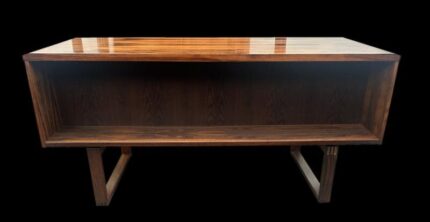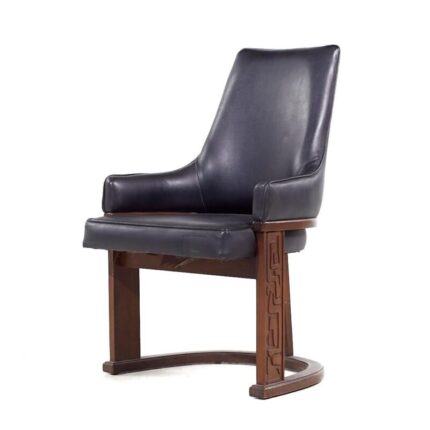Vintage Design
An impressive large and rear early Victorian carved pollard oak mirror back sideboard, Circa 1850 in date. The inverse breakfront sideboard features a shaped mirror back with superbly hand carved and pierced floral cresting and corners, set above a moulded top. It has three frieze drawers above four panelled cupboard doors. The left enclosing two slides and the right with a deep drawer. The sideboard is raised on a plinth base and is complete with working locks and keys. Add an elegant touch to a special place in your dining room with this formidable antique and rare pollard oak Victorian sideboard. Condition: In excellent condition having been beautifully cleaned, polished and waxed in our workshops, please see photos for confirmation. Dimensions in cm: Height 220 x width 221 x depth 75 – height with mirror Height 93 – height without mirror Dimensions in inches: Height 7 foot, 3 inches x width 7 foot, 3 inches x depth 2 foot, 5 inches – Height with mirror Height 3 feet, 1 inch – Height without mirror Pollard oak Pollarding is a pruning system in which the upper branches of a tree are removed, promoting a dense head of foliage and branches. It has been common in Europe since medieval times and is practised today in urban areas worldwide, primarily to maintain trees at a predetermined height. The bole of the tree, constantly cut back over a period of years, will eventually form a lump, or ‘burr’, which when sawn for veneer, gives a lovely grained, swirling figure. The effect is similar to that of burr walnut with its distinctive speckled grain. Burrs, or ‘burls’, are growths which appear on the side of tree trunks, resulting from a tree undergoing some form of stress. They may be caused by an injury, virus or fungus. During the 19th century great strides were made in the mechanisation of cabinet making. Marc Isambard Brunel [ Isambard Kingdom’s father] built the first steam driven saw mill, and invented a circular saw that could be used to cut veneers thinly and evenly for the first time. He also developed the first hydraulic veneer press. The figured wood cut from burrs and pollards is notoriously difficult to cut and lay: the wild grain which makes it so attractive results in a very delicate, brittle veneer. The new machines enabled the Victorian craftsmen to make the most of these beautiful timbers.
| Production Period | Before 1890 |
|---|---|
| Style | Antique |
| Detailed Condition | |
| Product Code | SQL-1258330 |
| Restoration and Damage Details |
Waxed, Polished
|
| Materials | Mirror, Oak |
| Color | Brown |
| Width |
221 cm 87.0 inch |
| Depth |
75 cm 29.5 inch |
| Height |
220 cm 86.6 inch |
| Duties Notice | Import duty is not included in the prices you see online. You may have to pay import duties upon receipt of your order. |

























































Reviews
There are no reviews yet.